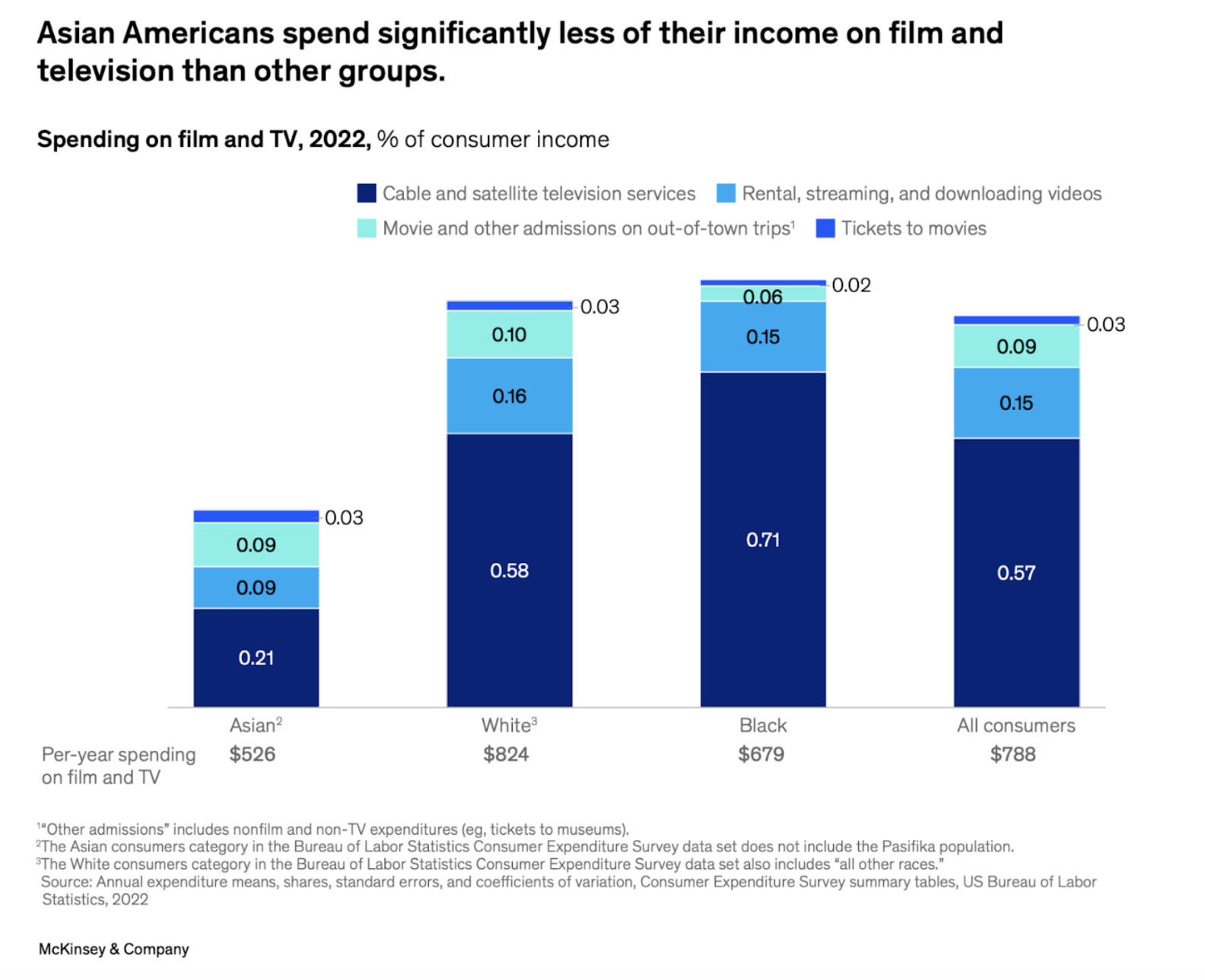Asian and Pacific Islander (API) presence is growing in Hollywood, both on the big screen and in TV series, and spanning various on- and off-screen roles. However, despite this growing visibility, there’s still untapped potential. According to new research conducted by McKinsey & Company in collaboration with Gold House, over two-thirds of API consumers in the United States express dissatisfaction with the portrayal and authenticity of their identities in media. This deficiency presents an opportunity not only for media makers to enhance their work, but also to reap greater financial rewards. Here are five key facts regarding the current state of API representation in Hollywood, as highlighted in McKinsey’s report:
1. Asian Americans earn more but consume less than other Americans

Data from McKinsey’s 2024 report.
Based on the Consumer Expenditure Survey from US Bureau of Labour in 2022, Asian Americans earn approximately 30% more annually than their non-Asian counterparts, but spend only 70% of their income, compared to 78% and 81% for White and Black consumers, respectively. However, their expenditure on media content remains disproportionately low, accounting for only 0.4% of their income, compared to 0.9% for White and Black consumers.
2. The majority of APIs feel that their race and ethnicity is not authentically portrayed in US-produced film and TV

Everything Everywhere All at Once (2022). Image via A24.
In McKinsey’s survey of API entertainment leaders, over 70% of the respondents believed that their race and ethnicity is not authentically represented in American media. However, box office receipts indicate that there is an appetite for US-produced API content — US-produced films with API leads generated 7.8% of total box office in the U.S. between 2018 and 2022. With more authentic representation, these box office numbers could increase.
3. API content faces genre challenges

Beef (2023). Image via Netflix.
Although the number of films with API leads is…
Read the full article here




